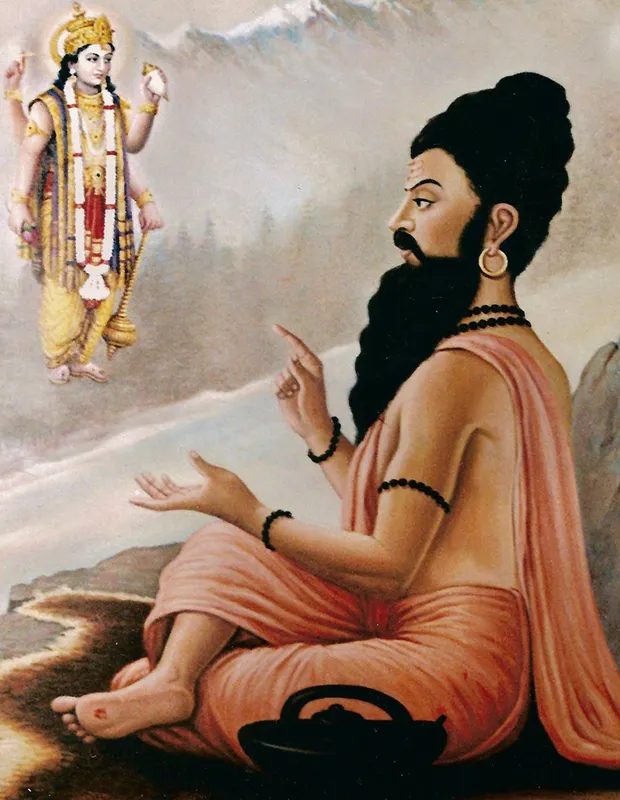Hindu Shastras: Sacred Scriptures and Wisdom of Hinduism
Introduction:

Nestled at the heart of Hinduism resides the extensive compilation of ancient manuscripts known as “Hindu Shastras.” This comprehensive reservoir covers a plethora of domains, ranging from philosophy and ethics to law and arts. Crafted over millennia, these texts offer profound insights into the complexities of human existence and the pursuit of dharma – the path of virtuous living. They furnish comprehensive guidance for various aspects of life, encompassing personal conduct, family dynamics, governance, and spirituality. Within the expansive realm of Hindu Shastras, works such as the Vedas, Upanishads, and Bhagavad Gita elucidate the nature of reality, routes to enlightenment, and the interplay between individual duties and cosmic harmony.
Spanning from poetic hymns extolling cosmic forces to intricate treatises on legal principles, these manuscripts capture the multifaceted essence of human experiences. The smritis prescribe protocols for societal behavior and legal matters, while the Puranas weave captivating mythic narratives. The Dharmashastras provide ethical guidelines, and the Arthashastras delve into economics and governance. This vast scope enables individuals to resonate with diverse aspects of existence, catering to a spectrum of inclinations and objectives. The fusion of oral tradition with written documents ensures the preservation of these teachings, while also permitting interpretation and adaptation over time.
Understanding Hindu Shastras:

The term “Shastras” emerges as a cornerstone intricately woven into the fabric of Hindu tradition, resonating profoundly across the chronicles of ancient wisdom. Rooted in the Sanskrit “shas,” denoting “to instruct” or “to command,” Shastras encompasses a loftier mission – that of imparting sacred wisdom and divine directives. It encapsulates the essence of “sacred scripture,” containing a reservoir of profound insights, moral principles, and cosmic truths that guide seekers on their spiritual journey.
From the resonant hymns of the Vedas orchestrating the cosmic dance of the universe to the philosophical explorations of the Upanishads plumbing the depths of reality, these texts resound with timeless wisdom. The epics – Ramayana and Mahabharata – interweave heroic narratives and intricate moral dilemmas, while the Puranas recount cosmic myths and intricate genealogies. This diversity is further enriched by the Dharmashastras outlining ethical conduct, the Arthashastras shedding light on governance and economics, and the Kama Sutra delving into the art of love and desire.
Hindu Shastra radiates as a luminous guide, illuminating the intricate pathways of spiritual practice, ethical conduct, and societal norms. It acts as a navigational tool, directing devotees toward the pursuit of dharma – righteous duty – and moksha – spiritual liberation. They ground spiritual seekers by offering meditative insights and practices that transcend the mundane, while also providing ethical frameworks that harmonize human interactions with the cosmic symphony.
Categories of Hindu Shastras:
Hindu Shastras unfold like a captivating tapestry intricately woven with diverse threads, encompassing a rich mosaic of categories that mirror the multifaceted nature of human existence. From profound metaphysical inquiries to practical guidelines governing social behavior, these categories span a wide spectrum of spiritual, ethical, and pragmatic pursuits. This layered approach ensures the enduring significance and applicability of the wisdom enshrined within Hindu Shastras, transcending temporal eras and contextual confines.
At the core of Hindu Shastras lies the “Shruti,” meaning “that which is heard.” This domain encompasses the most revered texts – the Vedas and the Upanishads. The Vedas, a collection of hymns, rituals, and chants, form the foundation of Hindu spiritual understanding. Believed to be revelations resonating in the consciousness of ancient sages during deep meditation, they transcend human origin. The Upanishads, often referred to as Vedanta (“the culmination of the Vedas”), delve into profound philosophical principles, elucidating the nature of reality, the self, and ultimate truth. These texts act as a bridge between the finite and the infinite, guiding seekers toward enlightenment and self-realization.
In parallel to the Shruti tradition, the “Smriti,” translating to “that which is remembered,” flourishes. This realm encompasses a vast array of texts, including monumental epics like the Mahabharata and the Ramayana. These epics interweave human narratives, moral dilemmas, and divine interventions, offering riveting stories alongside profound ethical principles that resonate through generations. The Smriti also encompasses texts that provide guidance for ethical conduct and legal frameworks, known as the Dharmashastras. These texts offer codes of law and ethics, outlining principles that govern interpersonal relationships, societal harmony, and dharma.
The Vedas: Foundation of Hindu Shastras:

The Vedas stand as towering pillars in Hinduism, carrying unparalleled significance as the oldest and most authoritative scriptures in the tradition. These sacred texts are not merely repositories of divine knowledge; they also form the foundational framework upon which the entirety of Hindu philosophy, spirituality, and cultural practices are constructed. Serving as a metaphysical bridge between humanity and the cosmic order, the Vedas embody timeless truths and enduring principles.
The Vedas are categorized into four distinct texts, each emanating a unique essence and purpose: the Rigveda, Samaveda, Yajurveda, and Atharvaveda. The Rigveda contains hymns dedicated to various deities and cosmic forces, unfolding as poetic expressions of divine grandeur. The Samaveda emphasizes the melodic rendition of these hymns, infusing rituals with melodious chants and rhythmic patterns. The Yajurveda provides guidelines for conducting rituals, emphasizing the practical aspects of sacrificial ceremonies. The Atharvaveda encompasses a wide range of content, including incantations, invocations, and reflections on life, health, and societal equilibrium.
The influence of the Vedas extends well beyond religious rituals. The Vedas delve into fundamental questions about existence, the nature of reality, and the interconnectedness of all phenomena. They lay the groundwork for various philosophical schools within Hinduism, ranging from the dualistic perspectives of Nyaya and Vaisheshika to the non-dualistic teachings of Vedanta.
Furthermore, the Vedas have left an indelible mark on the cultural fabric of Hindu societies. From intricate rituals like yajnas to the recitation of potent mantras, these texts permeate daily life. Their poetic and linguistic richness has not only preserved the ancient Sanskrit language but has also resonated in literature, art, and music. The Vedas’ exploration of dharma and ethical principles continues to serve as a guiding compass for individuals in their moral conduct and societal engagements.
Epics and Puranas:

The Hindu epics, epitomized by the Mahabharata and the Ramayana, emerge as intricate tapestries interwoven with vibrant threads of moral and ethical discourse. These narratives transcend simple storytelling, encapsulating profound wisdom that guides individuals along the intricate path of righteous living. The Mahabharata, with its complex characters and moral dilemmas, unravels the consequences of greed, ego, and the destructive nature of conflict. In contrast, the Ramayana exalts virtues such as duty, loyalty, and self-sacrifice through the revered life of Lord Rama. These epics unveil the nuanced interplay between virtue and vice, good and evil, and the consequences of human choices, imparting enduring lessons that resonate across cultures and generations.
The Puranas, a diverse collection of texts, serve as captivating storehouses of myths, legends, cosmogonic narratives, and genealogies of celestial beings and sages. These texts weave a dynamic narrative fabric that elucidates the origins of the cosmos, the cycles of creation and dissolution, and the interactions among gods, demons, and humanity. Through allegorical tales and cosmic chronicles, the Puranas convey profound metaphysical insights while simultaneously engaging the imagination.
The epics and Puranas function as conduits that not only transmit moral principles but also cultural narratives that anchor individuals within the broader context of the Hindu heritage. Through the trials, challenges, and triumphs of characters, readers and listeners glean lessons on virtuous conduct, the complexities of human emotions, and the interconnectedness of all living beings.
Moreover, these narratives contribute to the cultural identity of Hindu societies, fostering a sense of shared history and values. The epics and Puranas transcend being static relics of the past, evolving as living traditions that continue to influence art, literature, theater, dance, and religious practices. Festivals and rituals often draw inspiration from the tales and teachings within these texts, nurturing a profound connection to ancestral wisdom.
Dharma Shastras and Codes of Conduct:

Within the vast expanse of Hindu scriptures, the Dharma Shastras emerge as invaluable guiding lights, offering intricate directives for ethical and moral conduct. Attributed to revered ancient sages, these texts delve into the realm of dharma – righteous duty – which weaves the intricate fabric of human relationships, societal norms, and individual responsibilities. The Dharma Shastras act as intricate blueprints, aspiring to establish an equitable and just society grounded in principles of fairness, empathy, and spiritual growth.
Among the notable Dharma Shastras, the Manusmriti, attributed to the venerable sage Manu, holds a prominent place. Alongside other Dharmashastras compositions, this text traverses a wide array of topics, ranging from social hierarchies and family dynamics to personal conduct, legal affairs, and spiritual pursuits. The Manusmriti delineates the varna (caste) system and the associated obligations, emphasizing the importance of fulfilling one’s duties while upholding principles of equity and compassion. It offers guidelines for monarchs and rulers, outlining principles of governance and justice.
Moreover, these texts emphasize the sanctity of domestic life and the significance of adhering to dharma within familial roles. They provide counsel on marital responsibilities, parenting, and cultivating harmonious relationships, ensuring that the societal fabric is woven with threads of mutual respect, integrity, and ethical behavior.
Contemporary scholars and practitioners engage in debates about the contextual underpinnings of these texts and their relevance within our rapidly changing era. Some advocate for a nuanced understanding that separates timeless ethical principles from the cultural norms of their time. Others strive to reinterpret these texts to align with modern sensibilities and the pursuit of social justice.
Philosophical Treatises:

Embedded within the expansive tapestry of Hindu Shastras reside philosophical gems that illuminate the intricate mosaic of metaphysics, ethics, and spirituality. These texts stand as celestial compasses, guiding seekers on profound journeys of introspection, ethical contemplation, and the exploration of the transcendent truths governing human existence and the cosmic realm.
The Upanishads materialize as radiant gems within the vast treasury of Hindu scriptures, casting their ethereal brilliance upon the intricate tapestry of philosophical and metaphysical quests. Collectively known as Vedanta (“the culmination of the Vedas”), these texts transcend the rituals and ceremonies of earlier Vedic literature, delving into deep inquiries that beckon seekers across epochs.
At the heart of these philosophical treasures resides the Bhagavad Gita, a poetic and philosophical discourse between Lord Krishna and the warrior Arjuna. Set on the battlefield of Kurukshetra, the Gita addresses Arjuna’s ethical quandary about participating in a righteous war. In doing so, it explores themes of duty (dharma), selflessness, devotion, and the nature of reality. The Gita offers guidance not only to Arjuna but to all humanity, emphasizing the importance of fulfilling obligations while maintaining an impartial yet dedicated mindset.
The Brahma Sutras, attributed to sage Vyasa, comprise concise verses that distill the teachings of the Upanishads into a structured framework. These sutras navigate the profound metaphysical questions raised in the Upanishads, scrutinizing inquiries regarding the nature of reality (Brahman), the relationship between the individual soul (Atman) and Brahman, and paths to liberation. The Brahma Sutras offer a comprehensive exploration of diverse philosophical viewpoints, engaging with various schools of thought within Hinduism.
Hindu Shastras also include texts like the Bhakti Sutras and Nyaya Sutras. The Bhakti Sutras expound upon the path of devotion (bhakti), highlighting the profound connection between the devotee and the divine. These sutras elucidate the principles of loving surrender, selfless service, and unwavering devotion as pathways to spiritual fulfillment. In contrast, the Nyaya Sutras delve into logic and epistemology, presenting a structured approach to reasoning and argumentation.
Diversity of Thought and Interpretation:

Within the expansive realm of Hindu Shastras, one encounters a multitude of philosophical schools and sects grappling with fundamental inquiries about reality, ethics, and the human journey. From the non-dualism of Advaita Vedanta, asserting the unity of all existence, to the dualism of Dvaita Vedanta, emphasizing the distinct relationship between the individual and the divine, and the analytical classifications of existence in Sankhya – each school contributes a distinct perspective.
Moreover, regional variations and sects like Shaivism, Vaishnavism, and Shaktism infuse the spectrum with layers of diversity. These traditions venerate diverse deities and embody unique rituals, practices, and philosophical viewpoints, constructing a vibrant tapestry of thought that mirrors the cultural and geographical landscape of the Indian subcontinent.
One of the most intriguing aspects of Hindu Shastras is its interpretive fluidity and receptivity to diverse outlooks. This adaptability allows the tradition to evolve, accommodating new philosophical insights, societal changes, and individual journeys. Texts are not rigid doctrines but sources of inspiration and guidance, open to interpretations that resonate with the contemporary context.
This fluidity in Hindu Shastras is epitomized by the concept of “adhikara,” recognizing that individuals possess varying levels of spiritual maturity and understanding. As a result, interpretations may differ based on one’s stage of life, inclinations, and personal exploration.
The diversity within Hindu Shastras does not breed division; rather, it exemplifies unity. It underscores the universality of spiritual truths and the multifaceted nature of reality. The coexistence of various philosophical schools and sects within the tradition nurtures a spirit of intellectual curiosity, mutual respect, and a shared quest to unravel the profound mysteries of existence.
Pursuit of Knowledge and Wisdom:

The exploration of Hindu Shastras unfolds as an enduring journey, an unending quest for knowledge and enlightenment that transcends both time and space. These ancient texts serve as a treasury of insights into the human experience, ethics, spirituality, and the cosmos itself. Engaging in this expedition involves delving into the profound teachings of sages, philosophers, and seers spanning millennia, each seeking to unveil the mysteries of existence and the path to enlightenment.
The preservation and interpretation of Hindu Shastras extend beyond a mere historical endeavor; they serve as a conduit for connecting with the wisdom of our ancestors, bridging the gap between ancient wisdom and contemporary understanding.
The value of Hindu Shastras goes beyond preservation; it lies in its integration into modern lifestyles. As individuals navigate the intricate challenges of the modern world, these teachings shine as guiding lights, helping to find a balance between worldly pursuits and spiritual growth. Principles of compassion, self-realization, and ethical conduct become stabilizing forces, anchoring individuals in the pursuit of success, contentment, and holistic well-being.
By weaving these timeless teachings of Hindu Shastras into contemporary contexts, individuals discover profound ways to apply ancient wisdom to their everyday lives. Practices like meditation, mindfulness, and the cultivation of inner serenity provide tools to navigate the demands of the modern era, nurturing a sense of purpose and equilibrium. Furthermore, the ethical values and moral guidelines outlined in these texts transform into moral compasses, guiding decisions in an ever-evolving world.
Conclusion:
Hindu Shastras emerge as an eternal repository of ancient wisdom, a luminous mosaic woven with threads of spirituality, ethics, and philosophy. Within this intricate anthology of scriptures and texts, reside the profound contemplations of sages, philosophers, and seers who sought to unravel the mysteries of existence, the universe, and the human experience. From the sacred hymns of the Vedas to the metaphysical inquiries of the Upanishads, from the moral narratives of the epics to the philosophical reflections of treatises, Hindu Shastras unveil a multi-dimensional exploration of the intricate tapestry of life.
Embrace the opportunity to delve into the depths of Hindu Shastras, for within its pages, you will encounter insights that can illuminate your path, deepen your understanding of life’s complexities, and offer solace and inspiration. By engaging with this rich heritage, you will not only establish a connection with the wisdom of the ages but also discover tools to navigate contemporary challenges, carving a purposeful and meaningful trajectory for your journey ahead.
I aspire for this article to provide you with assistance. Should you discover value within these words, kindly contemplate sharing them with your loved ones. I invite you to spare a moment to offer your thoughts and appraisals below. For further remarkable content akin to this, I encourage you to delve into our website. Additionally, I extend an invitation to subscribe to my YouTube channel for forthcoming materials of similar nature. Lastly, feel unrestrained to establish a connection with me through social media. Wishing you a splendid day ahead!
हरि ॐ तत्सत्
FAQs:
Here are some frequently asked questions (FAQs) about the Hindu Shastras:






